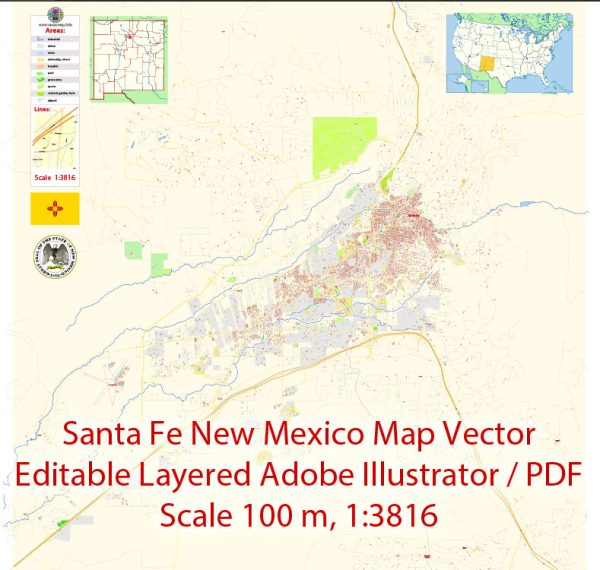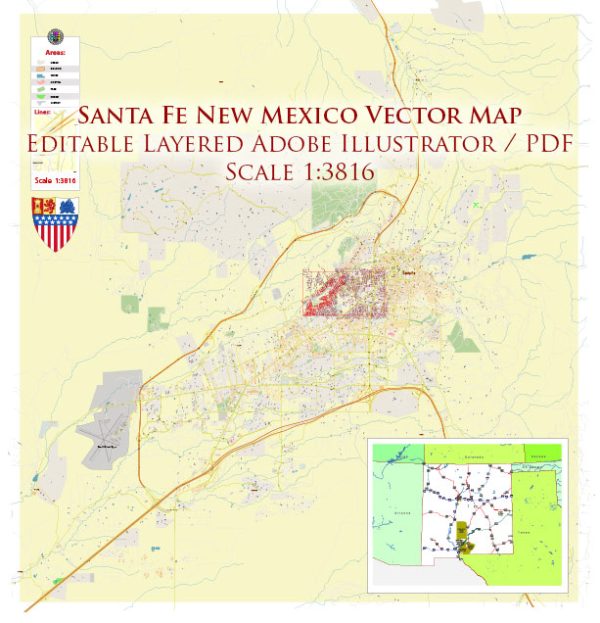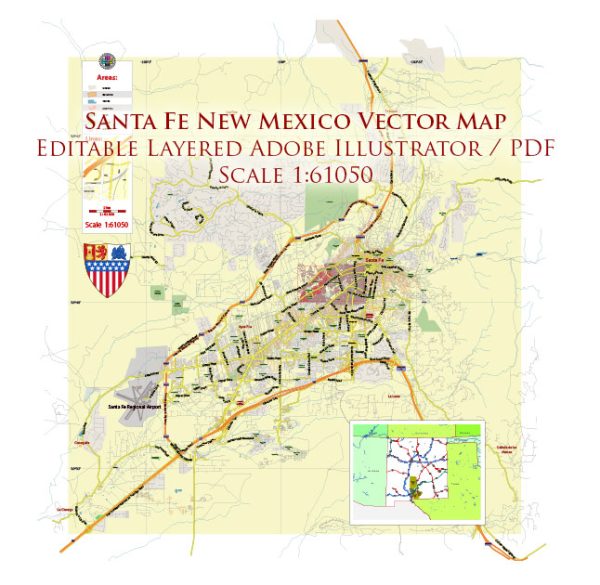Santa Fe, the capital city of the state of New Mexico, has a rich history of urban development that spans centuries. Here is an overview of the key historical points in the urban development of Santa Fe:
- Native American Settlements: Long before the arrival of European settlers, the area now known as Santa Fe was inhabited by Native American peoples, including the Pueblo people. The city’s location was attractive due to its proximity to the Santa Fe River and its fertile surroundings.
- Spanish Colonial Period (1607-1821): Santa Fe was founded by Spanish colonists in 1610, making it the oldest capital city in the United States. The city was established as a seat of government for the Spanish colony of New Mexico. The layout of the city reflects Spanish urban planning principles with a central plaza, narrow streets, and adobe-style architecture. The Palace of the Governors, built in 1610, is one of the oldest continuously occupied public buildings in the United States.
- Mexican Period (1821-1846): After Mexico gained independence from Spain in 1821, Santa Fe became part of the Mexican territory. During this time, the city continued to serve as an important trade center on the Santa Fe Trail, connecting Missouri to Santa Fe.
- American Territorial Period (1846-1912): The United States acquired New Mexico as a result of the Mexican-American War in 1848. The arrival of the railroad in 1880 further facilitated trade and transportation, contributing to the growth of Santa Fe. The city’s distinctive adobe architecture became a symbol of its cultural identity.
- Artistic and Cultural Hub: In the early 20th century, Santa Fe became a haven for artists and writers, drawn to its unique landscape and cultural heritage. The city’s art scene flourished, and the Santa Fe Art Colony played a significant role in shaping the cultural identity of the region.
- 20th Century Urban Development: The 20th century saw efforts to preserve Santa Fe’s historic character. Zoning regulations were implemented to maintain the city’s distinctive Southwestern architectural style. The Historic Santa Fe Foundation, established in 1961, has played a crucial role in the preservation and restoration of historic structures.
- Modern Era: Today, Santa Fe is known for its vibrant arts scene, adobe architecture, and as a tourist destination. The city continues to balance modern development with the preservation of its rich cultural and historical heritage.
Santa Fe’s unique blend of Native American, Spanish, and Anglo influences has shaped its urban development, making it a city with a distinctive cultural identity and a fascinating history.




 Author: Kirill Shrayber, Ph.D.
Author: Kirill Shrayber, Ph.D.